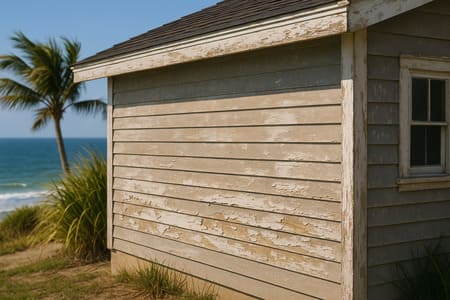Coastal Color Fading: How Salt Air Impacts Exterior Paint and What You Can Do About It

Living near the coast offers breathtaking views, soothing breezes, and a lifestyle many dream of-but it also means your home's exterior faces a constant assault from salt air and high humidity. While beachside beauty is a major perk, it brings with it a unique set of challenges for exterior painting. From premature fading to peeling and corrosion, coastal environments can wreak havoc on your home's paint job if you're not prepared.
The Telltale Signs of Salt Air Damage
If your home is just a few miles from the ocean, chances are you've noticed signs of wear creeping up faster than expected. Common symptoms of salt air damage include:
- Chalking: A fine, powdery residue on your siding or trim is often the first sign that paint binders are breaking down due to UV rays and salt exposure.
- Flaking and Peeling: As moisture and salt penetrate the surface, they can cause paint to separate from the substrate, leading to flaking and unsightly peeling.
- Discoloration: Coastal sunlight is intense and persistent. Combined with salty residue, it often results in uneven fading or blotchy appearance-especially on darker colors.
These signs don't just affect curb appeal-they can expose your home to water intrusion, wood rot, and other costly issues if ignored.
Choose Paint Formulated for Coastal Conditions
To beat the elements, you need more than a fresh coat of paint-you need the right paint. Look for products specifically labeled as marine-grade or designed for high-salinity, high-humidity environments. These paints typically contain:
- Advanced UV inhibitors to reduce fading
- Mildew-resistant additives
- Flexible binders to resist cracking and flaking
- Strong adhesion properties to maintain contact even under harsh coastal conditions
At Park City's premier painter, we only work with coatings proven to perform in seaside settings, so your home gets long-lasting beauty and protection.
Repainting: How Often Is Enough?
In most inland areas, a quality exterior painting job can last 7–10 years. Near the ocean, however, that timeline shrinks to around 3–5 years depending on exposure. Homes with direct oceanfront views or wind-facing facades often need touch-ups or full repaints more frequently. Regular inspections are key-if you see chalking, dullness, or surface bubbling, it's time to act.
Extend the Life of Your Paint Job with Smart Protection
You don't have to repaint every few years if you take preventive steps. Applying a clear sealant or UV-blocking topcoat over your finished paint can significantly delay damage from salt and sun. Trim, fascia, and window frames benefit especially from these added layers of defense. Regular rinsing with fresh water (especially after storms) also helps wash away salt deposits that speed up corrosion.
Exterior painting in coastal areas doesn't have to be a constant headache. With the right products and proper care, your home can stay vibrant and protected year-round.
Trust R L Peek Painting, Park City's premier painter, for all your exterior painting needs in Park City.